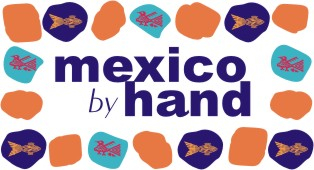I recently visited the Phoebe A. Hearst Museum of Anthropology at the University of California in Berkeley. They had an exhibit called "People Made These Things: Connecting with the Makers of Our World." The following are some of the curators' questions and commentary-- with some personal reflections from my own perspective as a buyer of Mexican folk art and crafts.
Are all the crafts in a village the same? Like anthropologists of the early 1900s, Phoebe Hearst "....assumed that all craftspeople in a tribal society made things the same. There was no point in looking at the unique personality of an individual maker.”
I must admit that it annoys me sometimes while I'm exhibiting at a crafts show or when I post on social media and folks make comments like, "I just love Mexican pottery." As if all pottery made in Mexico is the same, and they adore it ALL ...including the crappy souvenir mugs or sloppily painted pots found in every touristy market stall in that country. It's like saying, "I love art." That the finely painted platter below by award-winning artisan, Fernando Arroyo is just like that plate they bought in Mazatlan in the 1970's when they were on a cruise. No, it's not the same. Just like a Van Gogh painting is not the same as the paint-by-number I once made at age eleven.

While there are hundreds of people who make pottery in the village of Capula, which has its own traditional patterns and motifs, Fernando has created his own distinctive designs and style. Some potters are true artists, and I can tell you that in my experience, all craftspeople in a village do not make things the same.
Do we need to know their names? Commenting on the pottery from the ancient Peruvian Nazca society that did not have a writing system: “... when we look at the thin and delicate pottery, the finely painted lines, and the rich even colors and shine, we know that the individuals who made them had a sense of pride and professionalism in what they created.”
Does knowing the name of the maker give a piece more value? “In the distant past, Hopi potters did not sign their work. In the early 20th century, non-Native people started buying Indian pottery ...They were willing to pay more money if they knew who made the pots.”
In Michoacán, often a signed piece from more recognized names such as Zenaida Rafael Julian of Ocumicho, will cost much more than a piece from a very talented, but less known artist just down the street. But not always. Though Elena Felipe of Huancito was named a Great Master of Mexican Folk Art, she is reluctant to charge more for her finely decorated burnished pots than the other artisans in the village.



These are interesting questions. Like the Hopi, Purepecha artisans in Michoacán do not have a tradition of signing their pieces either. The artesania they create is seen as a community endeavor, part of the village's history and cultural traditions that are passed down from previous generations. While foreign buyers can become fixated on the name of an artist (and that a piece is signed), most artisans prefer that you know the name of their community. Responding to consumer demand, more well-known artisans in Michoacán have recently begun signing their work. That demand, plus import regulations requiring the country of origin and in the case of glazed pottery labeling a piece as "sin plomo" (lead-free) has prompted many to now sign or stamp their pottery. There is also the real concern about the pirating (copying) of designs by manufacturers and designers in countries like China. Not that labels or artist signatures will be able to prevent that onslaught --which is in fact endangering traditional folk art.


Mexico By Hand is intrigued by the central question asked of us in this unusual exhibit. Should we know the name of the maker of a piece of art, be it a painting or a clay pot? We strive to tell the story behind the artesania we buy and sell, to respect and honor the hardworking craftspeople who make it. But does it make a difference to you to see the artist's face or learn her story, and does that knowledge or artist's signature in fact make the work more valuable?
